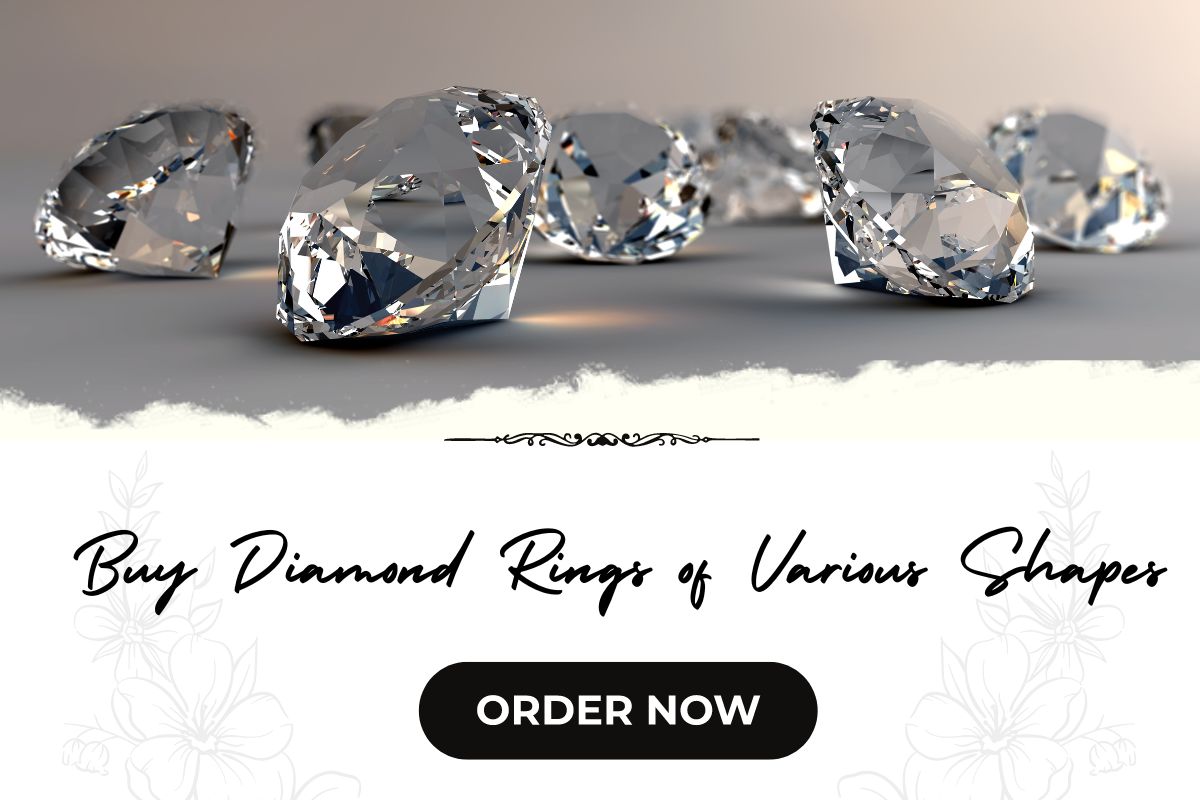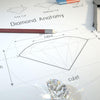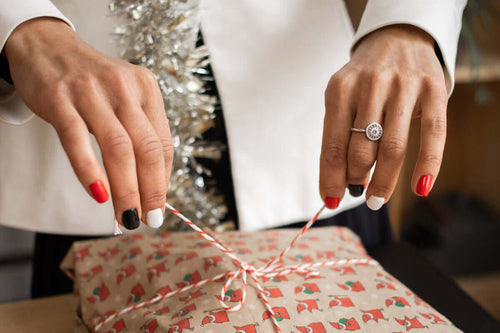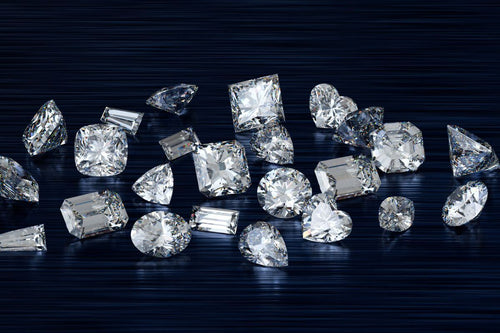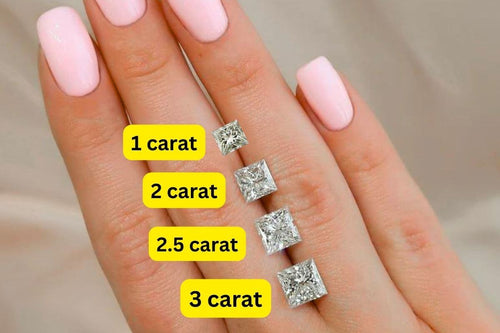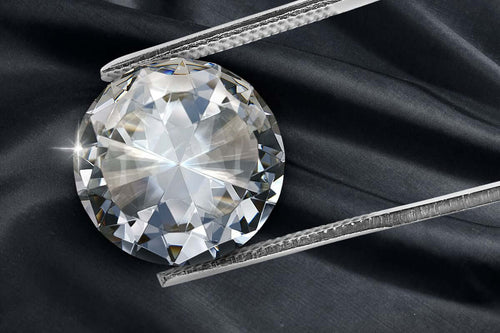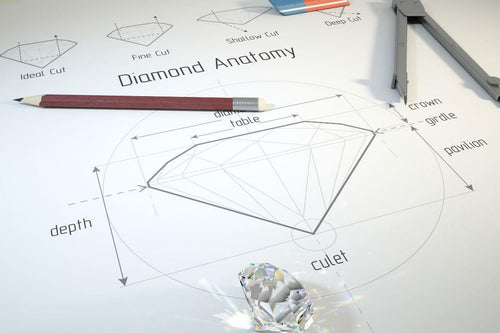Diamond shapes are central to the value and appearance of these precious stones. I understand that each shape comes with its distinct attributes and is crafted with specific cutting techniques. The most timeless and renowned shape is the round brilliant, celebrated for its unmatched ability to reflect light, often referred to as brilliance. However, a myriad of other shapes—princess, cushion, emerald, and more—offer versatility in style and reflect individual tastes and design preferences.
Table Of Contents
- Understanding Diamond Shapes
- Evaluating Diamond Quality
- Popular Diamond Shapes for Jewelry
- Detailed Diamond Shape Guide
- Diamond Cuts and Light Performance
- Selecting the Perfect Diamond Shape
- Technical Aspects of Diamond Shapes
- Caring for Different Diamond Shapes
- Diamond Shapes in Modern Design
- Buying Diamond Shapes
- The Future of Diamond Shapes
- Conclusion
- Frequently Asked Questions
Choosing the right diamond shape is a personal journey that reflects not only the style of the wearer but also the understanding of each shape's unique qualities. I recognize that while some shapes maximize a diamond's brilliance, others focus on clarity or the illusion of size. Fancy shapes such as the oval, pear, and marquise can appear larger per carat than round diamonds due to their elongated cuts, which is a consideration for those aiming to maximize presence.
I'm aware that understanding diamond shapes is not merely about aesthetics; it's about the balance between cut, clarity, and cost. Shapes such as the round brilliant typically command a higher price due to their extensive faceting and the raw material loss during cutting. On the contrary, shapes like the emerald cut require less raw material to be removed and hence, can be more affordable. This knowledge is pivotal when considering a diamond purchase that aligns with budget and personal style preferences.
Understanding Diamond Shapes
When choosing a diamond, shape and cut have significant implications on a diamond's appearance and quality. I'll explore their historical development and the expertise involved in crafting these precious stones.
Historical Evolution of Diamond Cuts
In assessing diamond shapes, it's integral to recognize their historical progression. The Old Mine Cut, prevalent until the late 19th century, featured a squarish shape with a high crown, deep pavilion, and large faceted culet. It evolved into the Old European Cut during the early 20th century, which retained the soft, round edges but with improved brilliance. I find that the art deco era saw the emergence of geometrical styles, influencing the design of engagement rings and diamond shapes alike.
The Science of Diamond Cutting
Diamond cutting is both an art and a science, combining precision with aesthetics to reveal a diamond's beauty. Techniques have advanced to the point where a diamond's cut is rated from 'Poor' to 'Excellent', influencing its brilliance and value. The cut involves aspects such as symmetry, proportions, and polish, which I carefully consider. Not to be confused, the term 'diamond cut' often interchangeably but incorrectly references diamond shapes, which are the geometrical outline like round, oval, or hexagon.
Cutting a diamond to exact proportions maximizes the stone’s reflective qualities. Excellent or Ideal cut diamonds have optimal light reflection, demonstrating the cutter’s priority on quality over carat weight. It's these principles that dictate the types of diamonds available and their suitability for various settings, such as the intricate designs of an Art Deco-inspired engagement ring.
Evaluating Diamond Quality
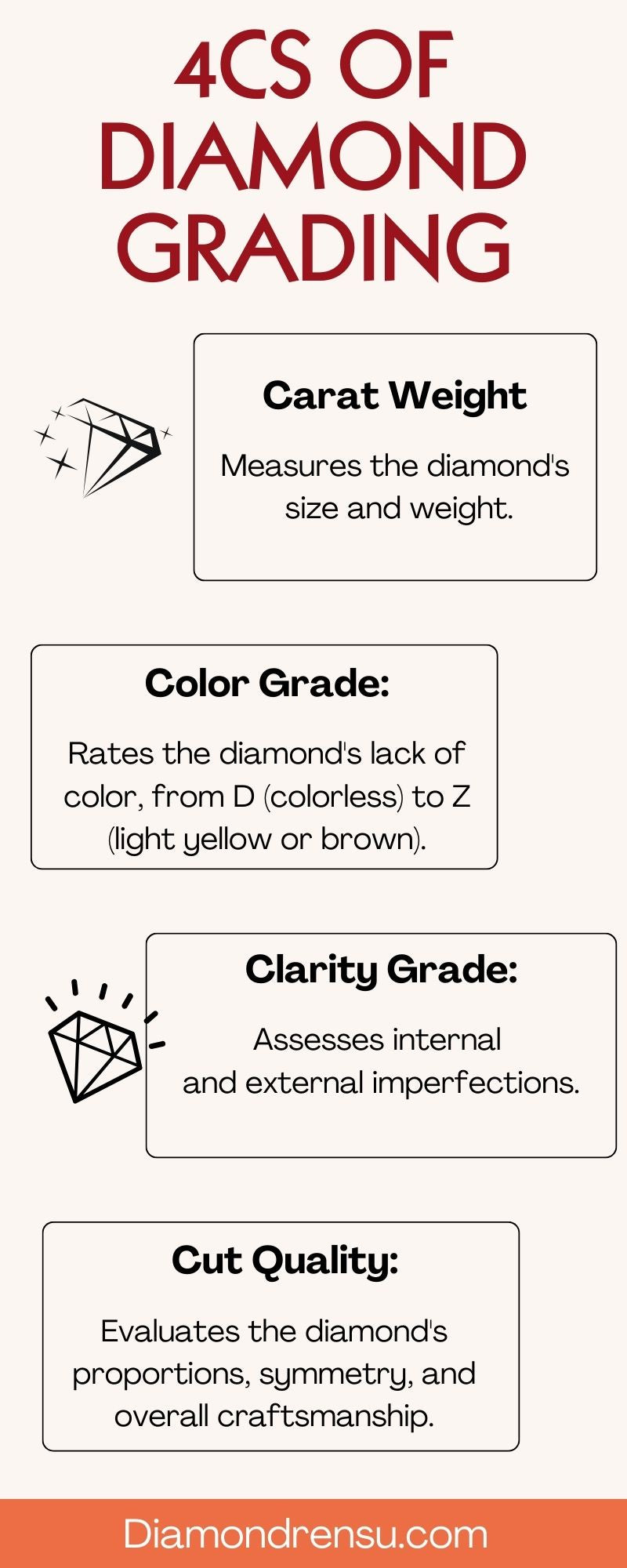
When selecting a diamond, I assess its quality based on universally recognized standards known as the Four Cs: Cut, Color, Clarity, and Carat. Additionally, I consider how these factors influence a diamond's brilliance and fire.
The Four Cs: Cut, Color, Clarity, and Carat
Cut:
- I categorize the cut of a diamond into three components: proportion, symmetry, and polish.
- A well-cut diamond reflects light internally from one mirror-like facet to another and disperses it through the top of the stone, resulting in high brilliance and fire.
- The GIA cut scale ranges from Excellent to Poor.
Color:
- I evaluate diamond color using the GIA standard scale which ranges from D (colorless) to Z (light yellow or brown).
- Typically, I find that the most sought-after diamonds are those in the colorless range (D-F) or near colorless (G-J). An H color diamond is a popular choice for balancing cost and visual appearance.
Clarity:
- Clarity is judged by the presence of inclusions and blemishes.
- The scale starts at Flawless and goes down to Included, with VS1 clarity being a very slightly included, yet typically eye-clean option.
Carat Weight:
- The size of a diamond is represented by its carat weight, where one carat equals 200 milligrams.
- Higher carat weight often increases a diamond's value, assuming quality in other areas is equal.
Factors Affecting Brilliance and Fire
- Brilliance refers to the white light reflections from the internal and external surfaces of the diamond.
-
A diamond cut to excellent or very good standards maximizes brilliance; angles and finish allow for optimal return of light.
- Fire describes the scattering of light into the colors of the spectrum, seen as flashes of color.
-
The interaction between the diamond's cut and light impacts fire; precise artistry in the cut can enhance this effect.
By closely examining these aspects, I can make informed decisions about a diamond's overall quality and appeal.
Popular Diamond Shapes for Jewelry
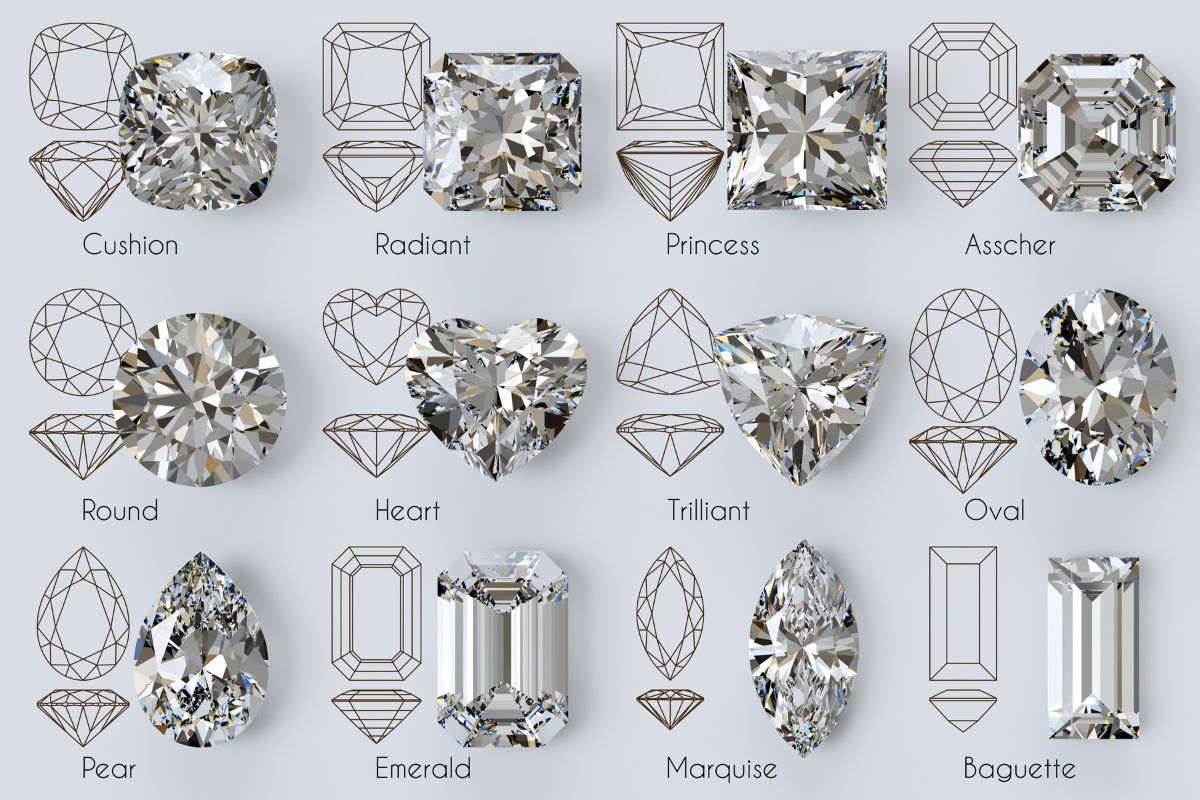
Choosing the right diamond shape for jewelry centers around personal preference, occasion, and style. Whether for an engagement ring or complementing a fine jewelry collection, each shape brings its own charm and brilliance.
The Timeless Round Cut
The Round Brilliant diamond is celebrated for its exceptional ability to reflect light, creating a superior sparkle that stands out in rings, necklaces, and earrings. It's often the go-to choice for those seeking a solitaire setting or a halo design, as it offers a classic look that never goes out of style. This cut has been perfected over centuries, with meticulous crafting that optimizes each of its 56 or more facets for unmatched brilliance.
Elegant Fancy Shapes
Fancy shapes refer to any diamond shape other than round. Each offers a distinctive aesthetic and often carries a price advantage due to their unique cutting styles. As a knowledgeable connoisseur, I find the following fancy cuts especially captivating for jewelry:
- Princess Cut: A modern favorite for engagement rings, it boasts a fiery sparkle with its sharp angles and contemporary style.
- Emerald Cut: Known for its long, step-cut facets and rectangular form, this cut exudes elegance and a mirror-like reflection.
- Oval Cut: This elongated shape can create the illusion of greater size, gracing engagement rings with a soft, curvaceous appeal.
- Cushion Cut: Featuring rounded corners and larger facets, this cut combines a vintage feel with a hint of modernity.
- Marquise Cut: With its boat-like shape, the marquise cut makes diamonds appear larger and fingers more slender.
- Pear Cut: Also known as the teardrop, this cut combines the brilliance of a round cut with the uniqueness of a marquise.
- Heart Cut: Symbolizing love, heart-shaped diamonds are a romantic and uncommon choice for engagement rings and pendants.
In the world of fine jewelry, the shape of a diamond affects not only its appearance but also its presence in a piece. Whether it's the classic round brilliant or a fancy shape, these diamonds embellish jewelry with a character that's as unique as the wearer themselves. When set thoughtfully into rings, bracelets, or other jewelry forms, these shapes can accentuate and complete a desired aesthetic.
Detailed Diamond Shape Guide
Diamond shapes greatly influence the aesthetics and character of a ring. I will explore the classic round brilliant along with a variety of fancy diamond shapes, unpacking their unique qualities and appeal.
Round Brilliant and Its Unrivaled Popularity
The round brilliant diamond is the epitome of classic diamond cuts. With 56 to 58 facets, it is designed to maximize light return, resulting in unmatched brilliance and fire. The round shape is symmetrical and versatile, suitable for a variety of settings and styles. Statistics show round diamonds are the most chosen shape due to their timeless elegance and superior sparkle.
Fancy Diamond Shapes Breakdown
Moving beyond round diamonds, fancy shapes offer a spectrum of choices, each with its distinct features:
- Oval Diamonds: Stretched along its length, the oval cut combines the brilliance of a round diamond with an elongated shape to create the illusion of greater size.
- Cushion Cut Diamonds: With soft corners and larger facets, the cushion cut has a romantic look with a rich history.
- Emerald Cut Diamonds: Known for its open table and step-cut facets, the emerald cut highlights clarity with understated elegance.
- Asscher Cut Diamonds: Similar to the emerald cut but square, the Asscher cut offers a unique X-shaped facet pattern seen when viewed from above.
- Radiant Cut Diamonds: A hybrid cut combining the silhouette of an emerald cut with the sparkle of a round, resulting in a vibrant diamond.
- Marquise Cut Diamonds: This boat-shaped cut creates a slender and elongated effect on the finger.
- Pear Shaped Diamonds: Resembling a teardrop, the pear shape optimizes carat weight, giving a bigger appearance.
- Heart Shaped Diamonds: A symbol of love, the heart shape demands skilled craftsmanship to ensure proper symmetry.
- Princess Cut Diamonds: Characterized by a square shape with sharp corners, the princess cut is the second most popular shape after the round diamond.
Each diamond shape has its characteristics and visual appeal. My goal was to illuminate the diversity of options available, empowering you to make an informed choice that reflects your personal style and preferences.
Diamond Cuts and Light Performance

In our detailed look at diamond cuts and light performance, we'll explore how the physical attributes of a diamond influence its visual properties.
Reflective Qualities and Light Behavior
The reflective qualities of a diamond, including brilliance and fire, are critical components of light performance. Brilliance refers to the intensity of the white light reflections from the internal and external surfaces of a diamond, while fire describes the dispersion of light into the colors of the rainbow.
- Brilliance: Achieved through maximum light return, directly influenced by the cut of the diamond.
- Fire: Visible when light disperses into spectral colors due to variations in the diamond’s facet angles.
Symmetry, Proportions and Their Impact on Shine
The symmetry and proportions of a diamond also exert a notable effect on its shine. Well-aligned facets increase the stone's ability to reflect light:
- Symmetry: Refers to the precision of the diamond's facet arrangement.
- Proportions: Includes considerations like the depth of the pavilion, the height of the diamond's crown, the size of the table, the length to width ratio, and the presence or absence of a culet.
Each diamond shape has an optimal set of angles and proportions that balance face-up size and light performance. Variation from ideal proportions can diminish a diamond's reflective qualities.
Selecting the Perfect Diamond Shape

When I choose a diamond, I look for a shape that complements my personal style and the ring setting that will showcase the gemstone. The shape of a diamond is pivotal in defining the ring’s character—be it an engagement ring or otherwise—and certain shapes work better with specific settings.
Match a Diamond Shape to Personal Style
- Round: Known for maximum brilliance, a round diamond is timeless and suits a variety of styles.
- Princess: Square or occasionally rectangular with sharp corners, princess-cut diamonds are ideal for a contemporary look.
- Oval: I find the elongated form of the oval cut elegant and flattering on the hand; it's traditional yet distinct.
- Asscher: This square shape with deep cut corners fits art deco-inspired engagement rings impeccably.
- Pear: Resembling a teardrop, pear-shaped diamonds create a unique and romantic feel.
- Cushion: With rounded corners, the cushion cut has a softness that's vintage and on-trend. Choosing the right diamond shape is about reflecting the wearer's style and personality. I consider lifestyle, fashion sense, and hand shape in the decision process.
Considerations for Diamond Settings
- Solitaire: A solitaire setting, with a singular diamond, accentuates the stone's natural beauty and works with almost all diamond shapes.
- Halo: This setting can amplify the size and sparkle of the diamond. Round, cushion, and pear shapes commonly feature in halo rings.
- Bezel: The metal rim around the gemstone in a bezel setting offers protection and is a modern twist that fits well with round and oval diamonds.
- Pavé: Tiny diamonds line the band in a pavé setting, complementing the central stone’s shape and adding to the ring’s brilliance. I pay attention to how a setting will secure and enhance the diamond. Practicality and aesthetics must go hand in hand to ensure the ring stands the test of time while remaining stunning.
Technical Aspects of Diamond Shapes
| Diamond Shape | Technical Aspects |
|---|---|
| 1. Round Brilliant | Features a circular shape with 58 facets, designed to maximize brilliance and fire. |
| 2. Princess Cut | Square or rectangular shape with pointed corners and a pyramid-like appearance. Typically has 58 facets. |
| 3. Emerald Cut | Rectangular shape with stepped facets and cropped corners. Known for its elegant appearance and hall-of-mirrors effect. |
| 4. Asscher Cut | Similar to the Emerald Cut but with a square shape and more brilliant-cut facets. Known for its vintage appeal. |
| 5. Oval Cut | Features an elongated oval shape with 56 to 58 facets, designed to maximize brilliance and elongate the finger. |
| 6. Marquise Cut | Long and narrow shape with pointed ends. Typically has 56 facets and is designed to maximize carat weight. |
| 7. Pear Cut | Combines the round and marquise shapes, featuring a rounded end and a pointed end. Typically has 58 to 71 facets. |
| 8. Radiant Cut | Rectangular or square shape with trimmed corners and brilliant-cut facets. Known for its brilliance and versatility. |
| 9. Heart Cut | Heart-shaped with a cleft at the top and rounded lobes. Typically has 56 to 58 facets and symbolizes love and romance. |
| 10. Cushion Cut | Square or rectangular shape with rounded corners and large facets. Known for its antique charm and sparkle. |
When considering technical aspects, I focus on the precision of the geometry of diamond cuts and the advanced techniques that contribute to a diamond's final allure.
The Geometry of Different Cuts
Every diamond shape has a unique geometry that impacts its aesthetic and value. Here, let me describe some well-known cuts:
- Round Brilliant Cut: I recognize this as the most popular cut. It usually consists of 58 facets, designed to maximize light return, hence brilliance and sparkle.
- Fancy Shapes: These include any diamonds that are not round. Examples are pear, marquise, oval, and others.
- Square or Rectangular: Cuts like the princess, cushion, and emerald. For squares, usually, ratios lie between 1.0 to 1.09, while rectangle ratios can range from 1.15 to 1.25.
- Elongated Shapes: These, such as the oval or marquise, can make a finger appear longer and slimmer.
Advanced Cutting Techniques and Precision
Advanced techniques in diamond cutting involve meticulous crafting to ensure each facet aligns for maximum aesthetic impact. The process has evolved from basic cleaving and polishing to a technology-aided art form.
- Step Cuts: These are about creating tiers - like on a staircase - typically found in emerald and baguette cuts.
- Baguettes: These are often used as accent stones and require precision in their long, step-cut form.
- Trillion-Cut Diamonds: A combination of precision and artistic flair. The three-sided cut is known for its brilliance.
Precise machinery and expert knowledge allow for the subtle manipulation of proportions and angles, which can enhance the fire, brilliance, and overall beauty of the diamond. Through the integration of advanced technology and traditional cutting wisdom, diamonds are cut with remarkable accuracy for a result that truly stands out.
Caring for Different Diamond Shapes
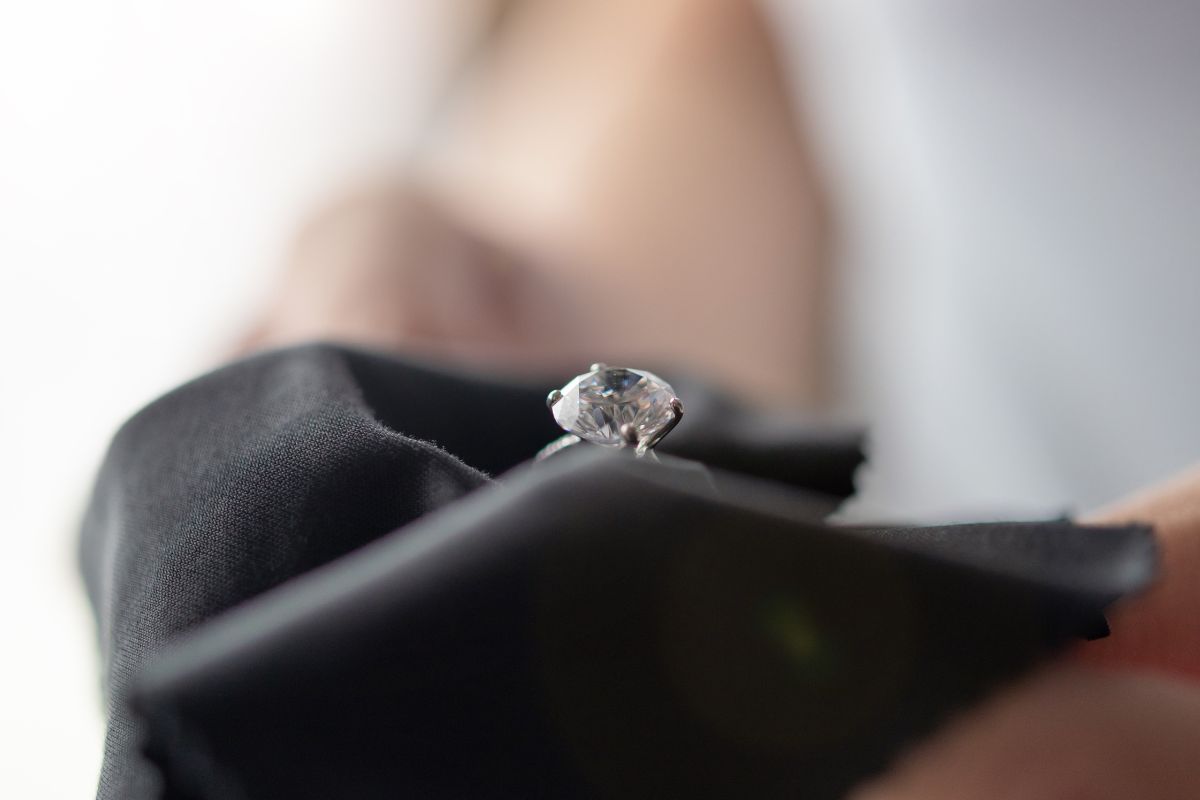
When it comes to diamond jewelry, each gemstone requires specific care to maintain its brilliance and structure. I'll provide concise guidelines and practical tips to ensure your diamonds remain in pristine condition.
Maintenance Guidelines
Round Brilliant Diamonds: I regularly check my round brilliants for loose settings, especially if they're in high-use jewelry like engagement rings. Their multiple facets can hide chips or cracks, so I always inspect them under good lighting.
Cushion and Radiant Diamonds: Given their varied cuts and shapes, these diamonds can have different vulnerabilities. For cushion diamonds, I'm careful with the corners, as they may be prone to chipping if knocked. With radiant-shaped diamonds, I ensure the protective setting, typically a prong or bezel, is secure since it's essential for their safety.
Princess and Emerald Cuts: With my sharp-cornered diamonds like the princess and emerald cuts, I'm extra cautious as these corners can easily snag or chip. I always check that the v-prong setting, which specifically protects the corners, is intact.
Cleaning and Storage Tips
Cleaning: Every couple of weeks, I clean my diamond jewelry to keep it sparkling. Here's a simple process I use:
- Prepare a mixture of warm water and mild dish soap.
- Soak the diamonds for 20-30 minutes.
- Gently brush them with a soft toothbrush, focusing on the bottom of the diamond where dirt commonly accumulates.
- Rinse under warm running water; if possible, use a strainer to avoid losing them down the drain.
- Dry with a soft, lint-free cloth.
Storage: To prevent scratches and other physical damage to my diamonds, I store them separately. My go-to storage method includes:
- Fabric-lined jewelry cases with individual padded slots.
- Soft cloth pouches for each piece.
- A jewelry box with dividers, ensuring diamonds don’t touch each other.
For travel, I always use a hard case jewelry box to protect my diamond entities against harsh impacts.
Diamond Shapes in Modern Design

Diamond shapes significantly influence the aesthetics and allure of today's jewelry designs. In this section, I will discuss contemporary trends and how custom shapes reflect personal styles in modern jewelry.
Contemporary Trends in Diamond Jewelry
In the realm of modern design, fancy shape diamonds have taken center stage, offering a refreshing departure from the classic round brilliant. Shapes such as the cushion and radiant have become popular choices for their unique appearance and ability to stand out. The cushion cut, with its rounded corners and larger facets, exudes a soft glow, while the radiant cut offers a vibrant and lively sparkle with its mixed-cut facets.
Heart-shaped diamonds are a testament to innovation in modern design, symbolizing romance and passion in pieces like pendants and engagement rings. These shapes are not just limited to the traditional realm but are also being incorporated into avant-garde designs.
- Cushion Cut: Known for a soft, pillow-like shape with rounded corners.
- Radiant Cut: Characterized by a lively sparkle, suitable for a variety of jewelry.
Custom Shapes and Personalized Jewelry
Custom-designed jewelry has become a hallmark of modern design, with bespoke diamond shapes reflecting individual preferences. Personalized jewelry often features unique diamond cuts tailored to the wearer's taste or the distinctive qualities of the gemstone.
Blue Nile, a well-known name in the industry, offers an extensive selection of diamond shapes and customization services, making it easier for customers to create pieces that are truly their own. Customers can select from a wide range of diamond shapes, including less traditional ones, and collaborate on the design of their custom piece, ensuring that their diamond rings are as unique as their personal stories.
- Blue Nile Customization: Offers a variety of diamond shapes and personalized design services.
- Unique Cuts: Enables individuals to express their style through custom-cut diamonds.
In the context of modern design, the possibilities are endless, with each diamond shape contributing to the distinctness of contemporary jewelry.
Buying Diamond Shapes
When I decide to buy a diamond, I focus on shape and pricing to ensure value and personal preference alignment. Specific shapes cater to different aesthetics and budgets, dramatically affecting the overall look and cost of diamond rings, particularly engagement rings.
Where to Shop for Diamonds
I often start my search for diamonds at reputable jewelers who have transparent grading reports and a broad selection, including Blue Nile. These jewelers offer a variety of shapes, from the classic round brilliant to the more modern cushion or radiant cuts. Here are some of the diamond shapes available:
- Round Brilliant: Known for its intense sparkle.
- Cushion: Square or rectangular with rounded corners.
- Radiant: Square or rectangular with trimmed corners.
To ensure authenticity and quality, I only consider gemstones with certification from recognized institutions.
Understanding Pricing and Value
The price of diamonds is contingent on multiple factors such as carat, color, clarity, and crucially, shape. Round brilliants, for instance, often carry a higher price due to their popularity and high waste during cutting. In contrast, shapes like marquise or pear might be less expensive. I have noticed that Blue Nile provides a detailed pricing chart that shows price variation across different shapes and carat sizes.
It's important for me to compare these prices and choose a shape that not only meets my aesthetic preferences but also delivers on value.
The Future of Diamond Shapes

The landscape of diamond shapes is evolving with advancements in cutting techniques and a growing interest in sustainability. My focus is on the precision of innovation in diamond cutting and the rise of lab-grown diamonds.
Innovations in Diamond Cutting
I've observed that the future of diamond shapes is intricately linked to cutting-edge technology used to cut gemstones. Traditionally, classic shapes like round, princess, and cushion have dominated the market. However, cutting technology now allows for personalized shapes and designs, catering to a diverse range of consumer preferences. For example, companies are using advanced techniques to offer custom-cut diamonds that can be tailored to an individual's specifications.
With the implementation of this technology, customers can expect a surge in unique diamond shapes beyond the traditional cuts. These innovations not only facilitate the creation of new shapes but also enhance the precision and quality of existing ones.
Sustainable Practices and Lab-Grown Diamonds
Sustainability is shaping the future of the diamond industry, compelling me to consider the rise of lab-grown diamonds. These gemstones, cultivated in controlled lab environments, offer an eco-friendly alternative to mined diamonds. Lab-grown diamonds are virtually indistinguishable from their natural counterparts and provide an ethical choice for consumers.
This table illustrates the key differences, driving the point that lab-grown diamonds are poised to gain popularity. My insight indicates that we can expect more environmentally conscious consumers to choose lab-grown diamonds, further influencing the variety and availability of certain diamond shapes and cuts.
Conclusion
Selecting a diamond shape is a highly personal decision and reflects individual style and preference. In choosing my diamond, I consider the traditional elegance of the round cut and the unique charm of fancy shaped diamonds, such as the marquise or oval. Each shape carries its own aesthetic and practical considerations.
- Round diamonds typically offer the most brilliance and sparkle.
- Princess-cut diamonds are known for their modern lines and excellent light dispersion.
- Oval diamonds present a classic feel with the added benefit of elongating the finger.
- Marquise diamonds, akin to oval ones, create an illusion of greater size.
Here's a simple break-down to guide my decision:
When choosing the diamond that suits me best, I take into account not just aesthetics but also factors such as the cost and how the cut may affect the diamond's appearance on my hand. My selection is a testament to my personal style and the message I wish to convey through my choice.
Also Read
Frequently Asked Questions
In this section, I address some of the most common inquiries people have about diamond shapes. I aim to clarify how these shapes differ in brilliance, variety, cost, and their overall appeal in jewelry, particularly engagement rings. Let's explore these questions to help you make informed decisions.
Which diamond shape offers the most brilliance?
The round brilliant cut is renowned for its brilliance, owing to its precisely engineered facets that maximize light reflection. This cut is designed to offer the highest level of sparkle and is typically the most sought-after shape for those prioritizing brilliance.
What are the different types of diamond cuts available?
The market offers various diamond cuts, including the round brilliant, princess, cushion, oval, marquise, radiant, emerald, asscher, pear, and heart. Each cut has unique attributes, with some optimized for brilliance and others for a distinctive appearance.
How does the shape of a diamond influence its cost?
A diamond's cost can be influenced by its shape due to the complexity of its cut and the rough diamond wastage during the cutting process. For instance, round brilliant diamonds often command higher prices because they require more precision and result in greater waste. Conversely, shapes like the princess cut tend to be more economical.
What should one consider when choosing a diamond shape for an engagement ring?
When selecting a diamond shape for an engagement ring, consider the wearer's style, the ring's design, and how the shape complements the wearer's hand. Personal preference plays a paramount role, and each shape offers different visual characteristics, such as the elongating effect of an oval or marquise cut.
Can you explain the difference between a radiant cut and an emerald cut diamond?
Radiant cut diamonds boast a lively sparkle akin to round brilliant diamonds, attributed to their faceted pavilion and crown. Emerald cut diamonds, on the other hand, have a more open and step-like facet arrangement, which emphasizes clarity and a subtle, mirror-like reflection rather than intense brilliance.
How do fancy diamond shapes compare to the traditional round cut in terms of popularity?
While traditional round cut diamonds remain the most popular for their unmatched brilliance and timeless appeal, fancy shapes have risen in popularity due to their unique characteristics and often more accessible price points. Shapes like the princess, oval, and cushion cuts are particularly favored for engagement rings.
Checkout some of our top collections:

